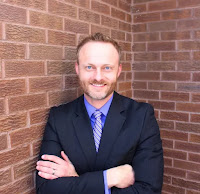 |
| Photo credit: Brett Jordan on unplash.com |
Last week’s meeting of the legislature’s Joint Corporations, Elections and Political Subdivision committee crackled with controversy.
Observers were troubled by the ranked-choice voting scheme proposed to strip our political parties of the power to put their own candidates on the general ballot.
Committee members pushed back against the secretary of state’s novel, and overly broad interpretation of Wyoming’s Constitutional provision for “secrecy of the ballot” (Art. 6, Sec. 11).
Senator Nethercott’s motion to draft a bill that codifies federal guidelines for certification of election equipment raised concerns that Wyoming election law would dance to the constantly changing tune of the Election Assistance Commission.
Committee Chair, Dan Zwonitzer’s, motion to remove election oversight from the secretary of state’s office seemed to thumb a nose at 76,000 voters who resonated with Chuck Gray’s calls for increased election integrity.
All of these issues merit the careful attention of Wyoming citizens. Each, in its own way, has the potential to erode further the power of our vote to express the consent of the governed.
But the part of the meeting that most piqued my interest happened in the opening ten minutes. State election director, Kai Schon, gave a brief report on the August 16 primary election. Generally speaking, things went very smoothly. For that, we thank him for his good work.
 |
| Kai Schon, Director of Elections |
He ended his report by touting a post-primary audit that went above and beyond the requirements of state law. He explained, “We want to look at the ballots that are actually being voted and see how our tabulators are adjudicating ballots.” In that sentence, he captured the mood of a strong majority of Wyoming voters.
Schon described reaching out to professor, Ken Gerow, director of UW’s statistics program, to help determine a statistically significant sample for the audit. He then reported triumphantly that the roughly 3,000 ballots of this random sample, distributed across 23 counties, matched exactly with the Cast Vote Records (CVRs).
If this report were exactly true as worded, voters around the state would have good reason to, in his words, “put to bed,” concerns about the trustworthiness of Wyoming’s ES&S voting machines. But Schon’s description was different from the Uinta County clerk’s description of the event. According to that website, they were comparing “ballot images and cast vote records.”
Audit observers in Uinta, and several other counties, did not carry out the stated intent of the director of elections to “look at the ballots that are actually being voted.” Instead, they looked only at the “ballot images.” There is a significant difference between the actual ballots and their “ballot images.”
Ballot images are photos that the machine takes of the ballot. They are produced by the machine, not by the voter. So, the audit conducted in Uinta County only compared one product of the machine (the ballot image) with another product of the same machine (the CVR, or cast vote record.) Nobody in Uinta County has looked at the actual ballots.
Sheridan and Natrona counties both promised a “Post-Election Ballot Audit…in accordance with and as required by the Wyoming secretary of state policy (dated June 29, 2022).” Was this different than Uinta county’s audit? Or did all of Wyoming’s counties look only at the ballot images? Did the secretary of state’s June 29 policy require a look at the ballots, or only at the ballot images? (Public Records Request, pending).
Lawmakers should ask Mr. Schon these questions. Either Uinta County defied the SOS’s requirements, or Mr. Schon’s language before the Elections Committee was sloppy and misleading to the Wyoming people.
Some might scoff at this question as the mere splitting of hairs. But in this day of computer wizardry, it is a matter of night and day. Images can be altered in the blink of an eye. Paper ballots cannot. The smartphone you have in your pocket has the capability of instantly editing any photograph. It can automatically erase unwanted pixels, like red-eye, and insert new pixels, like stars and dog noses. More sophisticated programming can do even more.
Computer experts that examined the CVRs and ballot images of the machines in Mesa County Colorado raised precisely this possibility. They demonstrated on-screen how the hand-blackened ballot oval in front of one candidate could be cut out and replaced by an empty oval, and how that hand-blackened oval could be pasted in front of a different candidate—altering the ballot image to contradict the actual ballot. (See [s]election.code at the 48:00 mark)
Nobody is alleging that such fraud happened in Wyoming. But the director of Wyoming’s elections should recognize that words matter. If the ballot audit actually audited the ballots, Wyoming voters should know it. But if the ballot audits only audited ballot images—as happened in Uinta County—public testimony that omits that detail degrades voter confidence.

No comments:
Post a Comment